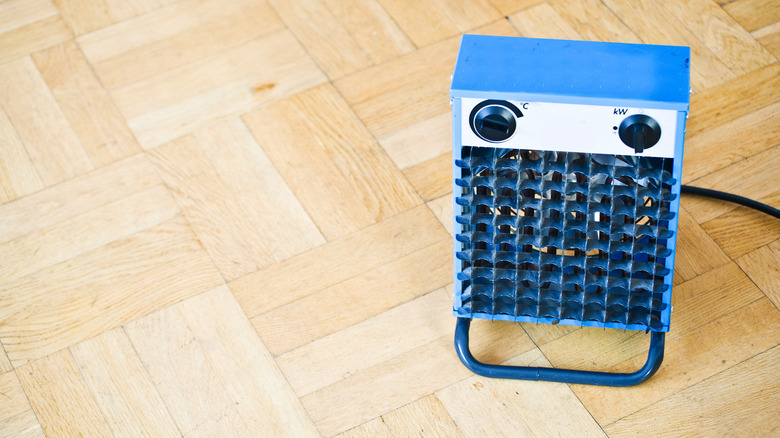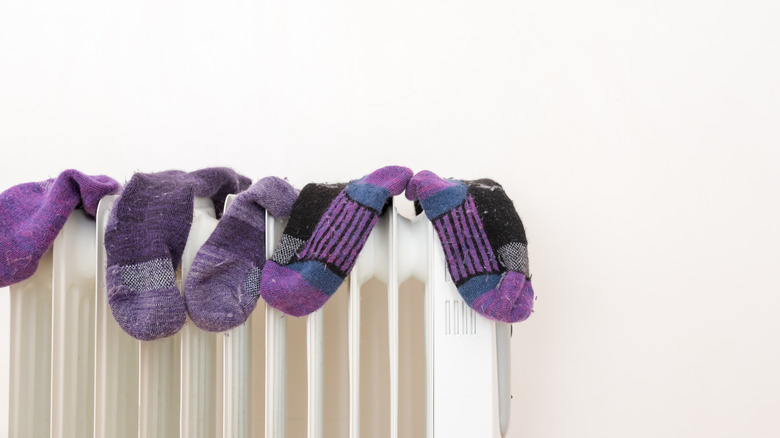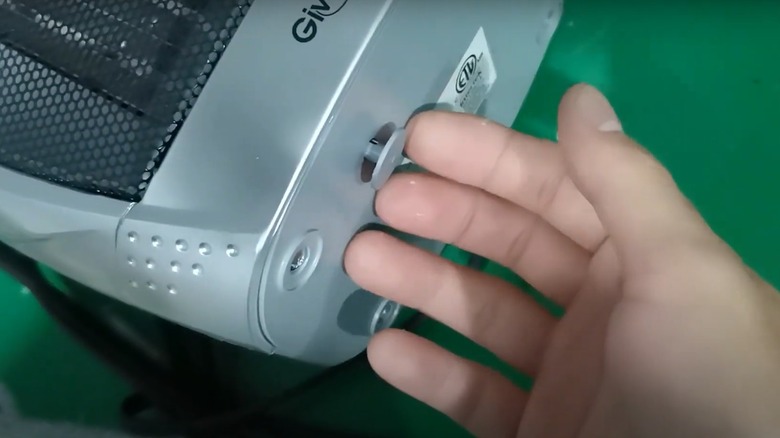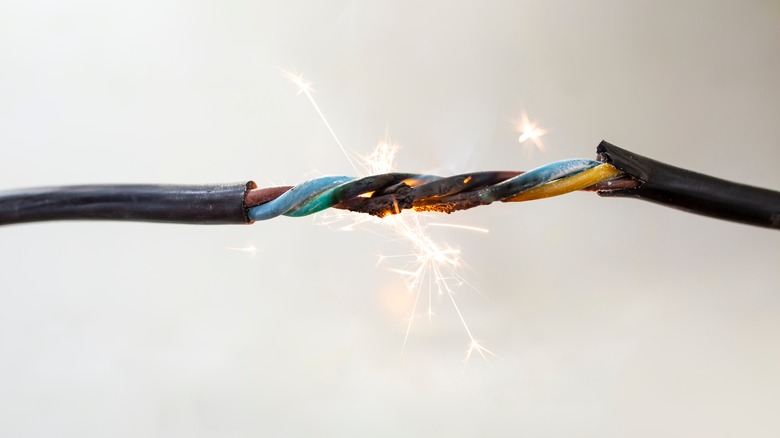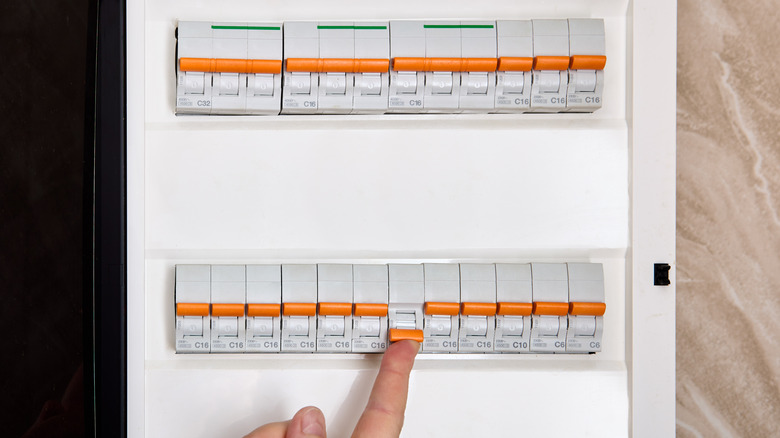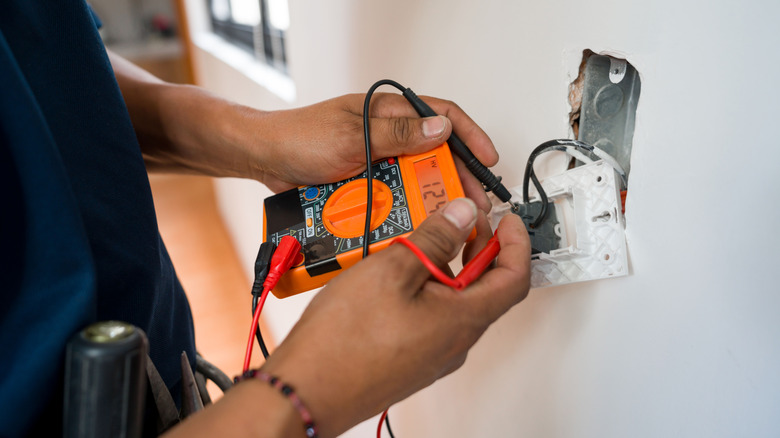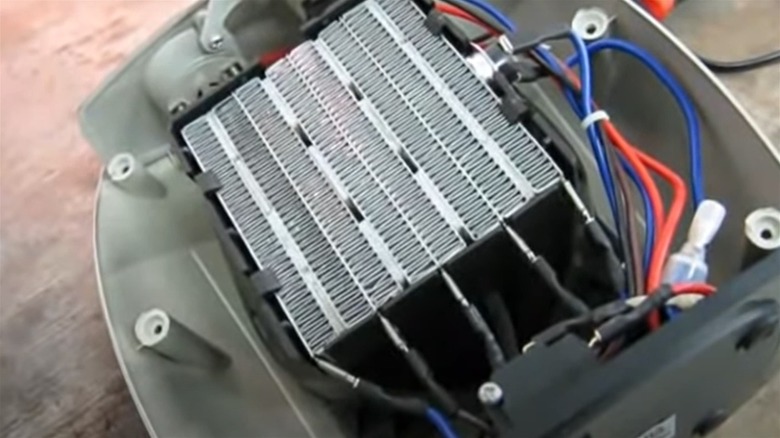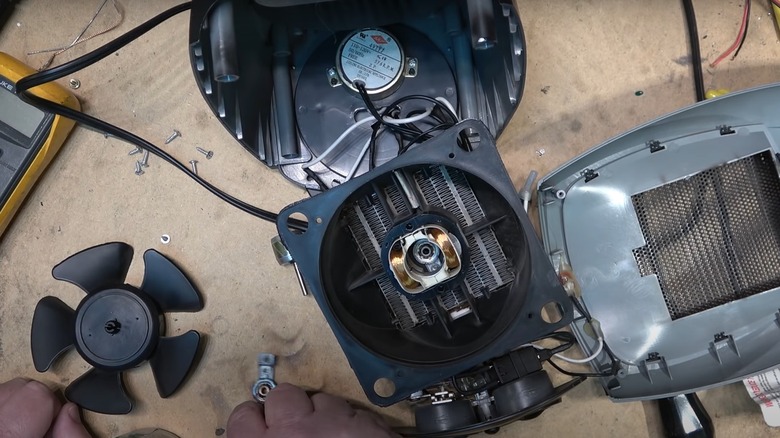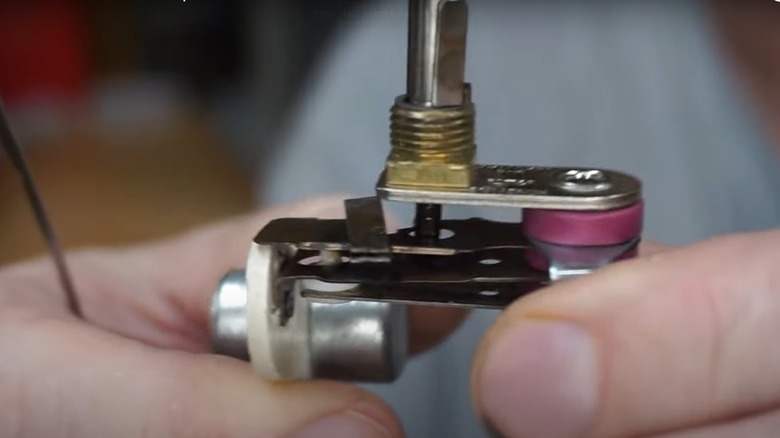Why Your Space Heater Stopped Working (And What To Do About It)
If your home doesn't have central heating or one room always seems to be colder than the rest of the house, a space heater can be a real lifesaver. Powered by electricity, these relatively compact devices can help ensure that you stay warm and cozy during the cold winter months. That is, as long as they're working properly. If your space heater has stopped working for no apparent reason, then you're likely feeling frustrated (and a bit chilly).
Unfortunately, there isn't one simple solution that will fix all space heaters. There are several possible reasons that yours might have decided to quit. Some of these will be pretty quick and easy to fix, while others may require a more involved repair or even replacement of the unit. Before you get too worried about why your unit has stopped generating heat, take a deep breath and read through some of the most common causes of the failure that are outlined below.
The unit needs to be cleaned
If your space heater suddenly stops working, it could be because it is dirty. If the unit gets covered with too much dust, it is going to impact its performance. When air isn't able to flow properly, the heater won't be able to maintain the set temperature. And, in some cases, if it gets too bogged down with dust, the whole unit may stop working altogether. This can happen if an automatic safety shut-off is triggered due to the unit starting to overheat from the lack of proper airflow.
If your model is dusty and dirty, start by giving it a good cleaning to see if that gets it up and running again. Never attempt to clean a space heater if it is still plugged in, and never use wet or damp cloths. Both of these can increase the risk of a fire. Start by wiping the unit down with a dry cloth to remove dust on the exterior. If you see dust inside any of the grates, you can try using a brush to get rid of it. You don't want to use paper towels, cotton cloths, or anything else that could break off. If little pieces are left behind, once you do get the unit working again, they could ignite in flame and start a house fire.
If there is substantial dust accumulated inside the unit or around more fragile components, your best bet may be to bring it to a professional for cleaning to make sure you don't increase the risk of a fire or break something. Once it's dusted off, test it to see if it is working once again.
You had something on top of it
Don't leave clothing or any other items on top of a space heater, especially if they're damp. They are meant for warming a room, not for serving as a drying rack. Placing anything on top does one of two things: It makes the device work harder since it has something damp to warm, and if the piece is large enough and covers most of the heater, it can cause it to overheat. This can potentially create a fire hazard because it will impact the ability of air to flow throughout the unit.
To reduce the chance of a fire, most of the space heaters today are designed with an automatic shut-off feature. This safety feature turns the unit off if the internal temperature gets too hot. So, if your unit isn't working, it could be because it overheated and caused it to shut off. If you think this may be the case, you'll need to look up the directions from the manufacturer to reset the unit. These likely involve turning it off, unplugging it, and waiting several minutes before plugging it back into the wall.
The tilt switch was activated accidentally
A tilt switch is another safety feature integrated into the design of many space heaters. These models feature a special sensor that detects if they tilt or tip over. Once the sensor registers that the unit has tipped over, it will cut off the power to it to prevent it from catching on fire. Even if your space heater didn't actually tip over, the tilt switch could be the reason that it isn't working.
It is possible for the switch to malfunction and incorrectly identify that it fell. It is also possible that someone else accidentally knocked your space heater over, stood it up again, and didn't realize that the tilt switch caused it to power off. To assess whether a malfunctioning tilt switch is to blame, first turn off the unit and unplug it from the wall. Then, you can remove the back panel to find the tilt switch so you can see if any of the wires appear to be damaged or if they need to be reconnected. If you don't feel comfortable doing this, you can bring the heater to a qualified professional for them to assess the situation.
The unit's power cord is damaged
If the power cord for your space heater is damaged, the entire unit can stop working. There are several things that can damage these cords. Perhaps you accidentally vacuumed over it when cleaning the room. Animals, including pets and unwanted pests, can also chew cords. Improper storage is another potential cause of fraying. If the cord was tangled up too tightly or pushed up against the space heater when it was being stored, it could have become damaged.
The first thing to do is to inspect the cable for any visual damage, such as chew marks, major kinks, or exposed wires. If you notice anything along these lines, then you may have just identified the cause of your broken space heater and should explore whether you can purchase a new power cord for it. Sometimes, the damage won't be visible, however. For example, if the cord was pressed up against something when it was stored, it may look completely normal from the outside, but the electrical wires on the inside may have become damaged or disconnected somehow. If you have an extra cord for your unit, try using it and seeing if it fixes the problem. If you don't have an extra cable, buy one and swap it out. This fix will require you to have some basic knowledge of rewiring, so if you don't feel comfortable following a tutorial, take your heater to a repair shop instead.
The circuit breaker tripped
The reason your space heater isn't working may not actually have anything to do with the unit itself. Instead, the problem could have been caused by a blown fuse. A blown fuse, also referred to as a tripped breaker, is caused when too many devices are pulling power from the same circuit at the same time. The surge in the need for energy overwhelms the circuit, and causes it to cut off all power. If you were using a vacuum cleaner, hair dryer, or another electrical device around the same time that the space heater stopped working, then this could be the reason.
Checking for a blown fuse is pretty simple. Begin by unplugging the space heater. Then, find your home's electrical panel and look to see if any of the fuses have been tripped. In many cases, you will be able to flip the switch back to restore power to the circuit, but in some cases, you might need to replace the fuse itself (or hire a qualified electrician to take care of the task for you). In the future, avoid running other electronics through the same circuit — or group of outlets — that your space heater is plugged into.
The outlet is not functioning properly
Sometimes, the outlet itself may be to blame for a heater that isn't turning on. If you've verified that the circuit isn't tripped, your next step should be to assess whether the outlet that you're trying to use is actually working. One way to do this is to grab a small electronic device — such as a hair dryer or a lamp — and plug it into the outlet.
After plugging the item in, turn it on. If it works, then the outlet isn't the problem. However, if it doesn't work, then that should clue you in that something is wrong with the power supply. If this is the case, test other outlets in the room to see which, if any, are working. Then, call an electrician to determine the problem with the malfunctioning one and make any necessary repairs to it. This will fix your problem.
The heating element isn't working
The heating element is the part of a space heater that is responsible for turning the electricity into the heat that is released into the room. Known as Joule heating, the process involves sending an electric current through the heating element. If it malfunctions, the unit as a whole isn't going to be able to make heat to warm your room.
Unfortunately, checking for a broken heating element is a more complicated task than many of the troubleshooting options described above. However, it is still something you should be able to do on your own. Before attempting to examine the element, make sure that the heater is unplugged and that it is completely cool. Then, you'll need to follow the manufacturer's instructions to disassemble the model and find the heating element. Use a multimeter set to resistance times 1 (RX1) and touch the heating element with the probes. Check the meter. If it registers a high number, then the heating element isn't the cause of your problems. However, if it registers infinity, then you've just diagnosed the problem and will need to replace the element or purchase a new space heater.
The fan stopped working
While all space heaters don't have a fan, many models do. If the fan isn't able to spin properly, it could be the reason why your unit stopped working. This is another problem that is going to take more time to remedy, but again, you should be able to handle it with just some basic mechanical knowledge. To access the fan in your heater, you'll most likely have to take everything apart.
There are a few things that can cause the fan in the heater to stop working. As you inspect it, look for indications of wiring problems, a dead motor, or a temperature gauge that isn't working properly. Again, to fix those you will need to have some mechanical or electrical skills, so if you're not comfortable following tutorials, you might need to buy a new heater. If the fan itself seems to be damaged or bent, contact the manufacturer for your model. They may offer a replacement part so that you don't have to purchase an entirely new model.
The thermostat isn't working or isn't set properly
The heater's thermostat could also be to blame for your problem. First, make sure that it is set correctly and that you didn't accidentally lower the desired temperature. If the set temp is cooler than the room, then the unit isn't going to do anything to make the space feel warmer.
If it is actually set to the desired temperature and still isn't working, then the thermostat may be broken. When that is the case, you'll need to disassemble the space heater to access the thermostat. You can then check it for continuity using a multimeter. If the multimeter doesn't register the device, then you will need to replace the thermostat, or if you aren't comfortable doing so, the entire unit. Start by reaching out to your manufacturer or a trusted repair shop to see if it is possible to remove and replace the thermostat. You'll want to ask for a quote for this service as well, so you can compare it to the price of a new model to determine whether or not it is worth the money.

